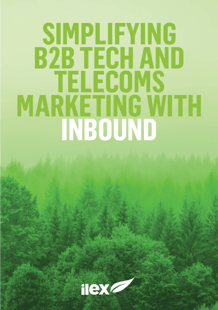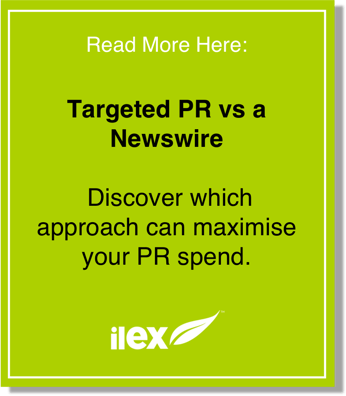The topic of Public Relations (PR) often sparks debate within the marketing world, with some simply viewing traditional PR as time-consuming and ineffective, and others viewing it as a key tool for building a trusted brand. The success of PR completely lies in the quality of its execution, but with traditional methods it can be difficult to actually measure the success of B2B PR campaigns. However, with marketing automation tools such as HubSpot, measuring the Return on Investment (ROI) of your PR is made possible.
How does PR fit into your inbound marketing strategy?
By rethinking your approach, you can start to interconnect your PR with your inbound strategy. While traditional PR interrupts, inbound PR can attract, engage and delight potential customers.
Using a multi-channel approach, inbound PR can reinforce your key messages and values, ensuring a clear, consistent tone of voice and a stronger brand personality. Rather than viewing this as repetition, you should view it as an opportunity to communicate and engage with potential customers across multiple touchpoints throughout the buyer’s journey, increasing the potential to attract and convert leads.
It’s important to create and utilise personas when planning your inbound PR campaign. You should create both buyer personas and media personas to gain a greater understanding of not only your customers’ needs and wants, but also those of media personnel such as journalists. You should consider their research process and challenges faced when writing a story, alongside how they prefer to be contacted, in order to increase opportunities for greater coverage of your content.

Download our ebook today!
Measuring ROI of PR using HubSpot
The strength of traditional PR usually lies within its content, rather than its measurability. However, with HubSpot it is possible to have strengths in both of these areas. Rather than simply measuring how many pieces of coverage you have gained from your PR, but having little idea of whether this has had any impact, HubSpot allows you to measure interactions all the way from attracting, right through to converting leads into delighted customers.
HubSpot makes marketing automation simple and offers great inbound features which can be used to promote and measure your PR content further. Utilising HubSpot’s social media, blogging and email marketing features, for example, allows you to communicate your PR successes with potential customers. Creating social media posts, blogs and emails linking to your featured PR content can increase awareness and help you to measure interactions.
There are multiple areas to measure ROI of PR using HubSpot, and we’ve listed them below to help you gain a clearer idea of how you can measure the success of your B2B company’s PR:
- Brand
In terms of brand awareness and coverage, measuring brand mentions is a useful way to gain an overall picture of your B2B company’s exposure. It is useful to also measure sentiment to better understand whether this coverage is good or bad, which can then be used to improve your services.
- Online engagement and SEO
You can use HubSpot to measure social media engagement in terms of views, impressions, likes, shares, and comments. This helps to gage an idea of which posts create the most engagement with your audience, which helps you to tailor content and posting times accordingly. Social Shares are also useful to measure to see when your audience shares your content on their social channels. This helps you to see what PR content your audience is enjoying enough to post themselves, and in turn gives you an idea of what you should create more of.

Another good way to track PR success is through site traffic, as an increase in site visitors following the release of a press release, for example, is a good sign that your PR Is working. You can use HubSpot to check your site analytics in terms of your visitors’ referral sources, which will give you a better idea of how your visitors reach your site.
Measuring backlinks helps you find which sites have mentioned your brand and linked to your website to make it easy for readers to click-through, which is a useful and easy metric to track. By collecting and measuring backlinks, you could also see a rise in your SEO rankings.
Domain authority is an SEO ranking from 1 to 100 (lowest to highest) and measures how your website performs in search results. This is a crucial measure of how your website compares to your competitors’. Your PR efforts can help your SEO through the placement of links in your content to well-ranked websites, as well as through attracting backlinks from other publishers. If your domain authority score increases, this can be a sign that your PR is working.
- Conversions
It can be difficult to measure the volume of new customers resulting directly from your PR activities, but with the use of HubSpot and other tools such as Google Analytics, you can investigate your customers’ routes to purchase. This can help you measure the volume of customers who have converted as a result of PR-related content, which can give you an idea of your inbound PR campaign’s success.
At Ilex, we have found that through using an inbound PR strategy, it has been much easier to track and measure our campaign results. Before HubSpot, it was difficult to measure our PR success across various platforms and touchpoints, however, HubSpot’s user-friendly features have given us useful insights into how we can develop our inbound PR for further success.
Our clients in the B2B tech and telecoms industries have also found greater PR success through the use of HubSpot’s integrated platform, which is particularly useful for companies in this industry, as forming a reputable brand is crucial for further opportunities and long-term success.
If you would like to learn more about how we can accelerate your PR efforts through the use of HubSpot and an inbound-focused strategy, book a consultation today.



